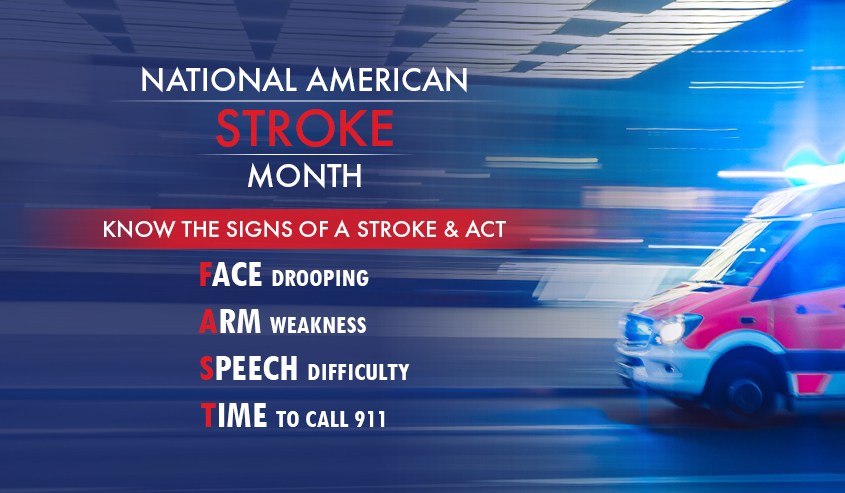
May, 1989 marked the beginning of National Stroke Awareness Month. At that time, President George H.W. Bush signed Proclamation 5975 to create public awareness of strokes and hopefully reduce the incidence of them. The U.S. Government along with the American Heart Association, the National Stroke Association, and a number of other non-profit organizations work in conjunction with one another to educate Americans about preventing strokes and to provide important resources to stroke victims.
Knowing the F.A.S.T. Warning Signs
The American Heart Association created the acronym “F.A.S.T.” to explain the warning signs of a stroke and enhance the responsiveness to an individual who is having one. F.A.S.T. stands for Face drooping / Arm weakness / Speech difficulty / Time to call 911:
- Face drooping – It’s essential to notice if one side of the individual’s face is numb or drooping? When asked to smile, is their smile lopsided or uneven?
- Arm weakness – is one arm numb or weak? When asked to raise both of their arms, is one of them drifting downward?
- Speech difficulty – is their speech slurred? Are they difficult to understand or not able to speak at all? When asked to repeat a simple phrase or sentence, are they able to do it.
- Time to call 9-1-1 – even if the symptoms dissipate or stop, call 9-1-1 and get the person to a hospital immediately. The first 3 hours are critical for making a recovery.
While these are the primary symptoms of someone who is having a stroke, there could be additional symptoms including:
- Sudden confusion; problems speaking, or understanding speech.
- Sudden difficulty walking; dizziness, loss of balance, or loss of coordination.
- Sudden numbness; weakness of the arm, face, or leg, usually on one side of the person’s body.
- Sudden severe headache with unknown cause.
- Sudden vision problems with one or both eyes.
If you or a loved one or friend is showing any or a combination of these symptoms, call 9-1-1 immediately. It could save their life and ensure a faster recovery if they’re diagnosed early. An MRI can be helpful in evaluating the condition of the individual that had a stroke.
Neuroimaging and Stroke
When it comes to the evaluation and management of strokes, neuroimaging has gone beyond its traditional role of diagnosis and became an essential tool in those processes. The primary objectives of imaging are:
- Prognosis prediction
- Prompt accurate diagnosis
- Secondary preventative precautions
- Treatment triage
The end goal of diagnostic imaging is to improve the outcome for the patient and to maximize the number of patients that can be treated. To learn more about how diagnostic imaging can play a significant role in saving a stroke victim’s life, contact Vital Imaging today at 305.596.9992.
